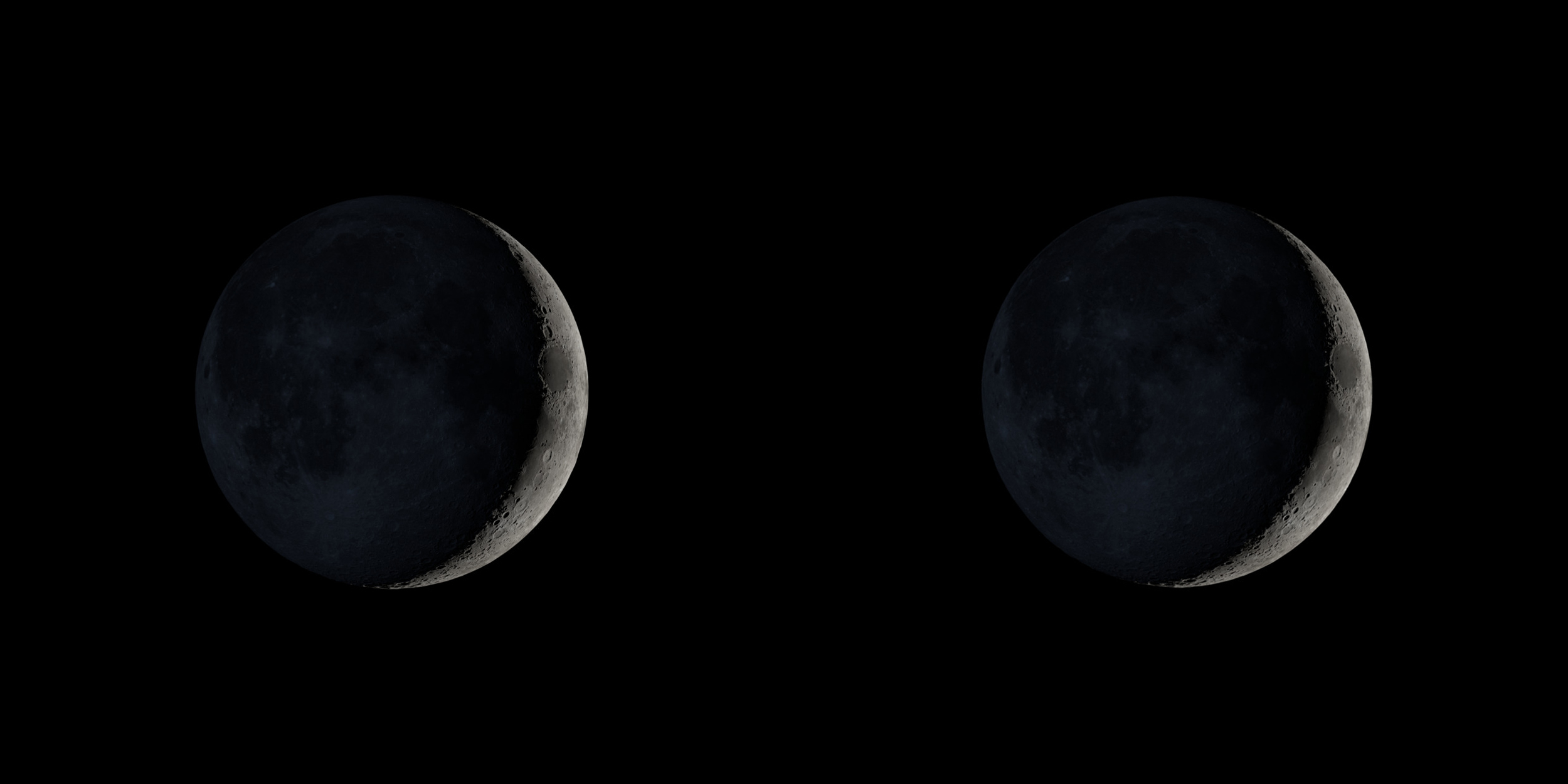Julian Hoeber
Seeing the Moon as a Sphere Rather than as a Disc
Stereographic images are made up of two pictures. One picture for the left eye and one for the right eye. The stereographic image grew out of Charles Wheatstone’s research into binocular rivalry— the phenomenon that happens when each eye sees a different image and the brain is forced to reconcile them. Wheatstone invented a stereoscopic viewer in 1838 to try to understand how binocular vision actually worked. The history of stereographic photography largely originates with Wheatstone’s experiments.
19th Century photographers making stereo images learned the ways binocular vision created the perception of depth. The difference between what the two eyes see, and the points at which the two distinct lines of sight from each eye converge, gives the mind a sense of spatial relationships. However, one of the problems of 3D photography comes from the limits of parallax in normal human vision. Because of the spacing of our eyes, without an additional apparatus we don’t actually perceive depth through stereoscopic 3D beyond about 20 feet. Objects beyond that distance are perceived as having depth because of relative size and position, as well as color and contrast effects created by the atmosphere.
The effect this has is that any stereophotography of far away objects will appear flat in unless the cameras taking the two images are spaced wider apart than our eyes. This greater separation of the cameras creates a deeper parallax that we visually reassemble when we view the resulting pairs of stereo images. The farther away the object, the farther apart the cameras need to be to create sufficient parallax to produce perceptible dimensionality in the image. Carleton Watkins’ stereo photos El Capitan at Yosemite would have had the cameras spaced at least a few feet apart.
Which brings us to the problem of making 3D photos of something really far away: The moon. With our naked eyes we perceive the moon as a flat disk rather than a sphere. The distance to the moon is such that the cameras photographing the moon would need to be several miles apart to create enough parallax for the images to be perceived as dimensional. A clever and simple solution to this nearly insurmountable inconvenience was found by photographing the moon from the same spot, a full moon cycle (about 28 days) apart. The result is a 3D image that feels satisfyingly spherical. A strange poetic byproduct of this is that viewing such a pair produces a picture that contains 2 moments in time, a month apart, seen simultaneously.
NASA has a website that will show you what the moon will look like on any night, at any hour. The images are pretty high quality. You can just type in the date and hour and the image pops up. Here is a link:
https://svs.gsfc.nasa.gov/4955
I had a thought that if I pulled images from specific dates and laid them out in pairs, I could make stereo images of the moon from NASA’s data. The results are below.
The stereo images can in turn be viewed from any VR headset that uses a smartphone as its screen, such as Google Cardboard. Just click on an image and place your phone into the headset.


